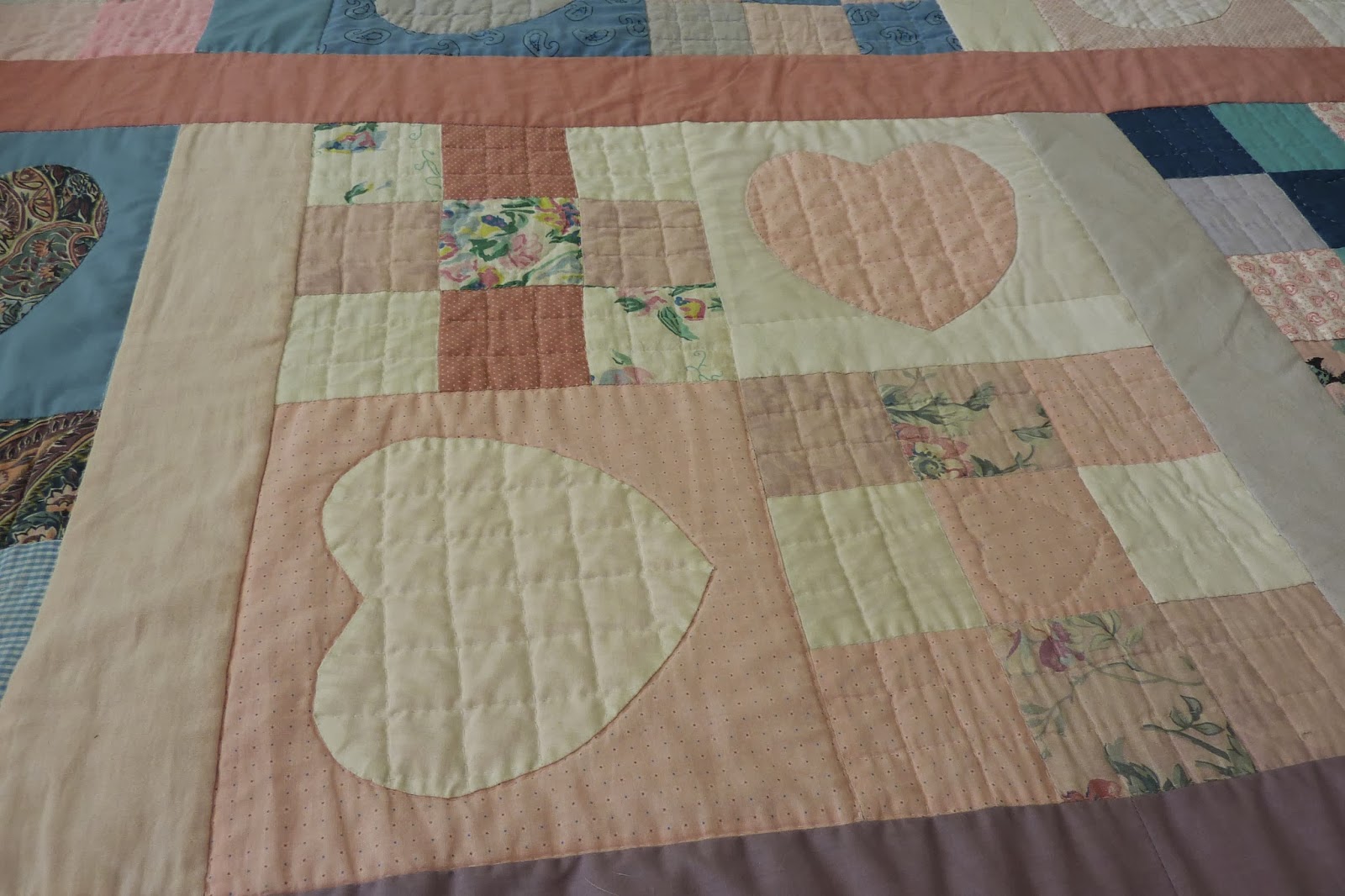 |
| A corner with the replaced binding |
Susan Vorbeck of Designs in Fabric, Petaluma, was the person who restored the quilt and educated me in the process. To make newly purchased fabric antique she boils the fabric in a cast iron pot, repeating the process until she likes how aged the fabric looks.
 |
| Extra fabric for future restoration |
And she points out that handmade quilts are imbued with the spirit of the person performing the intricate work, which is readily felt by those touching the quilt. Susan was creative.
 |
| A rent in the lower right hand heart Susan creatively repaired. |
 |
| Restored quilt on bed |







No comments:
Post a Comment